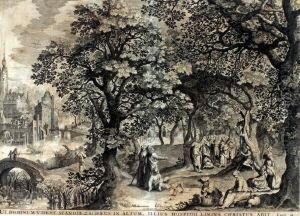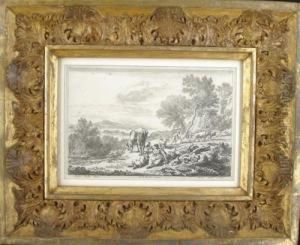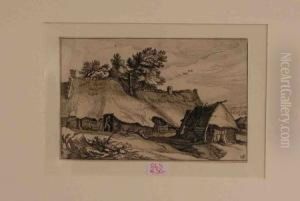Claes Jansznicola I Visscher Paintings
Claes Jansz Visscher, born in 1587 in Amsterdam, Netherlands, was a prominent figure in the Dutch Golden Age of art and cartography. Often referred to as Claes Janszoon Visscher or simply Claes Jansz Visscher, he was part of the Visscher family, a dynasty of Dutch draughtsmen, engravers, and cartographers that significantly influenced the development of cartography and landscape art in the 17th century. Visscher's contributions were not limited to one genre; he was versatile, working as an artist, mapmaker, and publisher. His legacy includes a vast collection of maps, town plans, landscapes, and maritime scenes that have been invaluable in providing insights into the geographical and cultural aspects of his time.
Visscher's work is characterized by its meticulous detail, accuracy, and artistic quality, blending cartographic precision with an aesthetic appeal. He was particularly skilled in engraving, which allowed him to produce maps and artworks with intricate details. His cartographic works covered various parts of the world, reflecting the Dutch interest in global exploration and trade during the era. Visscher also produced numerous topographical views and cityscapes of European cities, which were highly sought after by his contemporaries for their beauty and accuracy.
As a publisher, Claes Jansz Visscher played a crucial role in the dissemination of art and knowledge in the 17th century. He published works by other artists and cartographers, contributing to the spread of the Dutch artistic and cartographic style across Europe. His publishing house, established in Amsterdam, became one of the most renowned of its time, producing not only maps and atlases but also emblem books, historical works, and portraits.
Visscher's legacy extends beyond his death in 1652. His sons and grandsons continued his work in the family business, ensuring the Visscher name remained synonymous with high-quality cartographic and artistic works. Today, Claes Jansz Visscher is remembered as a key figure in the history of Dutch art and cartography, his works preserved in museums, libraries, and private collections around the world, serving as a testament to the vibrancy and depth of the Dutch Golden Age.



